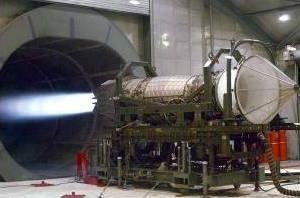Jet Engines
An aircraft engine, or power plant, produces thrust to propel an aircraft. Reciprocating engines and turboprop engines work in combination with a propeller to produce thrust. Turbojet and turbofan engines produce thrust by increasing the velocity of air flowing through the engine. All of these power plants also drive the various systems that support the operation of an aircraft.
Turbine Engines
An aircraft turbine engine consists of an air inlet, compressor, combustion chambers, a turbine section, and exhaust. Thrust is produced by increasing the velocity of the air flowing through the engine. Turbine engines are highly desirable aircraft power plants. They are characterized by
- Smooth operation
- High power-to-weight ratio
- Readily available jet fuel.
What is a Jet Engine?
A jet engine is a machine that converts energy-rich, liquid fuel into a powerful pushing force called thrust. The thrust from one or more engines pushes a plane forward, forcing air past its scientifically shaped wings to create an upward force called lift that powers it into the sky. That, in short, is how planes work—but how do jet engines work?
Jet Engines and Car Engines
One way to understand modern jet engines is to compare them with the piston engines used in early airplanes, which are very similar to the ones still used in cars. A piston engine (also called a reciprocating engine, because the pistons move back and forth or "reciprocate") makes its power in strong steel "cooking pots" called cylinders. Fuel is squirted into the cylinders with air from the atmosphere. The piston in each cylinder compresses the mixture, raising its temperature so it either ignites spontaneously (in a diesel engine) or with help from a sparking plug (in a gas engine).

The burning fuel and air explodes and expands, pushing the piston back out and driving the crankshaft that powers the car's wheels (or the plane's propeller), before the whole four-step cycle (intake, compression, combustion, exhaust) repeats itself. The trouble with this is that the piston is driven only during one of the four steps—so it's making power only a fraction of the time. The amount of power a piston engine makes is directly related to how big the cylinder is and how far the piston moves; unless you use hefty cylinders and pistons (or many of them), you're limited to producing relatively modest amounts of power. If your piston engine is powering a plane, that limits how fast it can fly, how much lift it can make, how big it can be, and how much it can carry.
jet-engines-8308-NN6IwOl.docx (206 KB)
jet-engines-8308-mskPkWM.pptx (1128 KB)
jet-engines-8308-RvmtL7B.ppt (787 KB)

